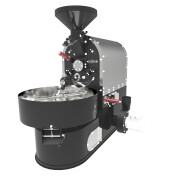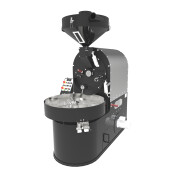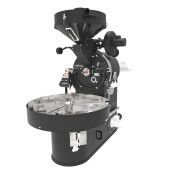
Rate of Rise (RoR) in Coffee Roasting: Key to Consistency and Flavor Control
The Rate of Rise (RoR) is a vital metric in coffee roasting that tracks the speed at which the temperature inside the roasting drum increases, expressed in degrees per minute. By carefully monitoring RoR, roasters can gain control over the roast's progression, ensuring they reach key roasting milestones at the right times for optimal flavor development.
What Exactly is Rate of Rise?
RoR is a way to measure how fast the coffee beans are heating during the roast, providing real-time feedback on temperature changes. It’s essentially a diagnostic tool for controlling the roast profile and achieving consistent results from batch to batch. The RoR reflects the change in bean temperature over time, making it a crucial part of the coffee roast profile chart.
RoR and the Coffee Roast Curve
Roasters often visualize RoR alongside the coffee roast curve, which shows the bean temperature throughout the entire roast cycle. RoR gives an additional layer of insight, indicating whether the temperature is increasing too fast or too slow. For a smooth and balanced roast, a gradual decline in RoR is preferred, ensuring that the beans develop evenly without underdeveloping (due to too slow of a rise) or burning (from too rapid of a rise).
The Importance of RoR in Roasting
Maintaining a stable RoR is essential for avoiding common roasting defects like tipping or scorching. Sudden drops (or "crashes") in the RoR can lead to underdeveloped beans, while a sharp rise near the end of the roast (a "flick") can result in burnt or bitter flavors. By keeping RoR steady, roasters ensure that every stage of the roast—from drying to first crack—progresses smoothly.
Practical Application for Roasters
- Early RoR Focus: Right after beans are charged into the drum, the RoR helps roasters determine when the beans begin to heat up following the initial cooling phase, known as the turnaround point. This early phase is crucial for setting the roast's trajectory.
- Mid-Roast Adjustments: During the middle stages of roasting, especially during the Maillard reaction phase, RoR helps fine-tune the balance of acidity and sweetness by controlling how quickly sugars are caramelized.
- First Crack and Beyond: As the roast approaches first crack, maintaining a consistent RoR can help avoid unpleasant "flicks" that cause the beans to overdevelop, resulting in a less desirable roast.
Avoiding Common RoR Issues
A steep drop or sudden spike in RoR indicates instability in the roast, often leading to flavor imbalances. Roasters can use tools and techniques, like adjusting airflow or heat input, to smooth out the RoR curve, ensuring even heat distribution throughout the roast.
In summary, RoR is a critical tool for creating a controlled and consistent roast. It allows roasters to manage temperature shifts at crucial points, optimizing the development of flavors, and maintaining consistency across batches. By mastering RoR, coffee roasters can achieve precise control over their roasting profiles, leading to superior coffee quality.
For more technical insights and equipment that can help optimize your roasting process, check out Coffed Roasters for professional solutions tailored to your needs.






